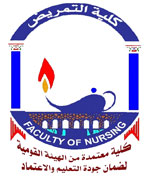patients under Open heart surgery, high risk for many respiratory complications post operatively, chest physiotherapy techniques are used to increase lung volumes, improve oxygenation and decrease the incidence and severity of pulmonary complications after cardiac surgery .deep breathing is a major par t of the therapy. Aim ,This study amid to compare the effect of incentive spirometer, and conservative therapy among open heart surgery patients for the prevention of postoperative pulmonary complications. Design, Aquasi –experimental design.
Setting, conducted in postoperative intensive care unit of Assiut university hospitals. Subject, a convenience sample of 50 adult open heart patients of both sexes.Group1 (incentive spirometry), group2 (conservative therapy).25 patients for each. Tools, Two tools were developed in this study, tool one (Patient's socio demographic characteristics and health status among open heart patients), tool two (Observation checklist for post-operative pulmonary complications among open heart surgical patients).Result of this study revealed that a statistical significant difference was found between the two groups regarding to atalectasis . As regard pulmonary secretion it was noticed that a highly percent 80%&72% of patients in group 2(conservative therapy)&1(incentive spirometer) respectively. Conclusion of this study illustrated that a positive effects of incentive spirometer compared with other physiotherapy breathing techniques on occurrence of pulmonary complications among open heart patients postoperatively, showed a significantly smaller amount of secretions and atelectasis, improved oxygenation and had less reduction in FVC(forced vital capacity) and FEV1 (forced expiratory volume in one second)on the fourth postoperative day compared to conservative therapy. Recommendations, Explain to the nurse the deference between deep breathing exercise alone and deep breathing exercise with anther maneuver.
Research Department
Research Journal
Assiut Scientific Nursing Journal
Research Member
Research Publisher
NULL
Research Rank
2
Research Vol
Vol , (2) No , (4)
Research Website
NULL
Research Year
2014
Research_Pages
86-99
Research Abstract

